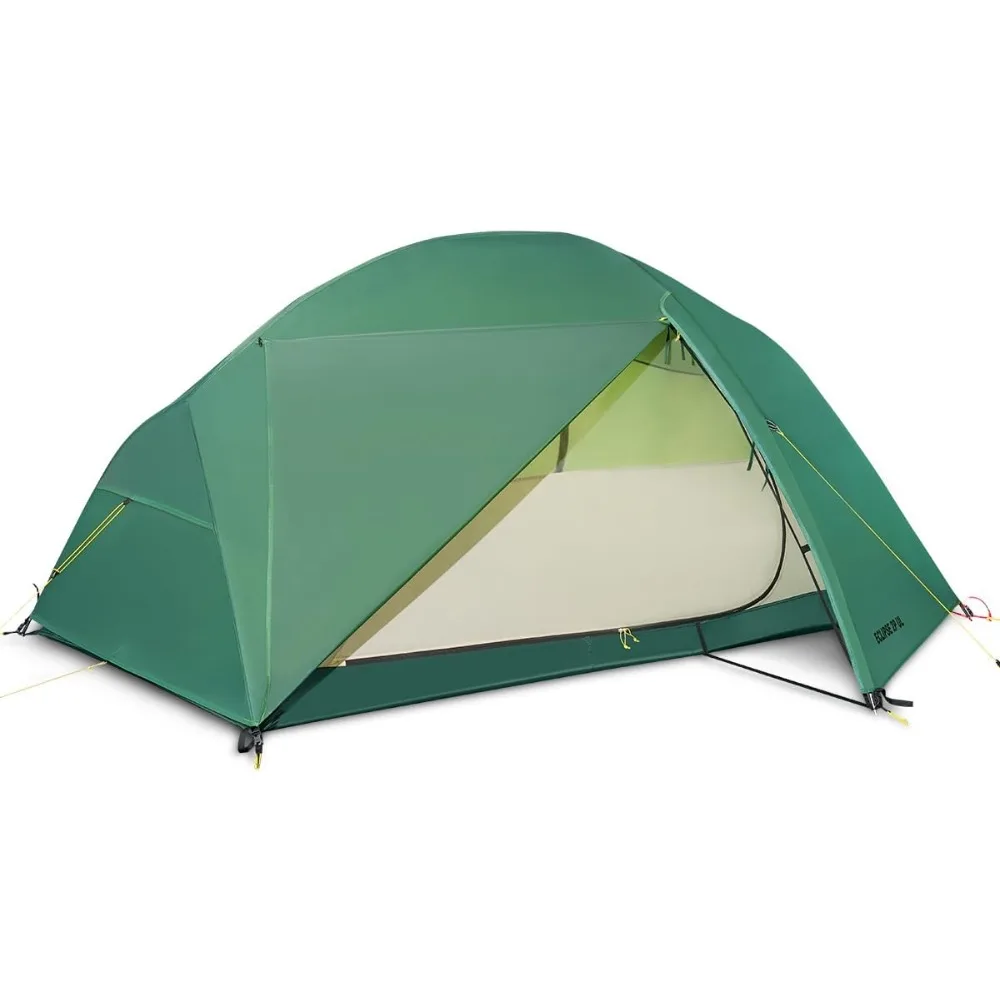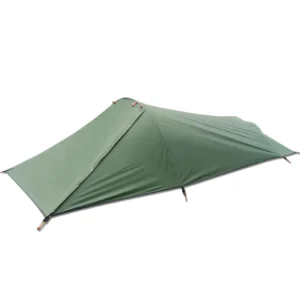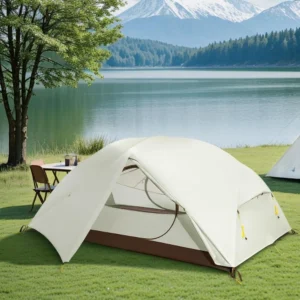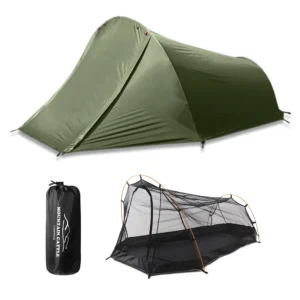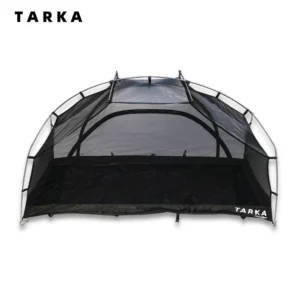Why Tent Selection Makes or Breaks a Long-Distance Hike
When embarking on a long-distance hiking adventure, few gear decisions impact your experience as profoundly as your choice of shelter. The right tent becomes more than just equipment—it transforms into your home, sanctuary, and psychological comfort zone for weeks or even months on the trail.
Unlike weekend backpackers, long-distance hikers face unique challenges that demand carefully considered shelter solutions:
- Your tent will likely see hundreds of nights of use in constantly changing conditions
- You’ll carry this shelter every single step of the way—potentially for thousands of miles
- On many trails, hikers spend 10-12 hours daily in their tents (sleeping plus weather delays)
- Mental well-being becomes directly linked to shelter comfort and reliability
The delicate balance between lightweight tents for long treks and necessary protection creates one of the most challenging gear dilemmas. Every ounce saved might mean thousands of fewer pounds lifted over a complete thru-hike—but inadequate shelter can lead to misery or even danger.
This comprehensive guide draws on extensive testing and real-world experience to help you find your ideal ultralight trekking tent for 2025’s long trails, whether you’re tackling the PCT, AT, CDT, or any extended wilderness journey.
Our Testing Methodology: Real Trails, Real Conditions
At Explore Elements, we don’t just casually examine tents in controlled environments. Our testing methodology reflects the realities long-distance hikers face across America’s diverse landscapes.
Our Testing Team and Experience
Our core testing group has collectively completed over 15,000 miles on major long-distance trails including the Pacific Crest Trail, Continental Divide Trail, and Appalachian Trail. This extensive experience informs every aspect of our evaluation criteria for lightweight trekking tents.
Testing Environments
We evaluate tents across multiple challenging scenarios:
* Alpine conditions at 10,000+ feet with high winds and temperature fluctuations
* Desert stretches with intense sun exposure, sand, and limited anchoring options
* Dense forests with humidity, constant moisture, and limited pitching space
* Prolonged rainstorms with multiple days of continuous precipitation
Key Performance Metrics
Rather than focusing on marketing claims, we assess:
* Weight-to-durability ratio based on real-world performance
* Weather resistance through actual exposure, not just specifications
* Setup speed when exhausted, in darkness, or during adverse weather
* Space efficiency for comfortable long-term living
* Ventilation effectiveness in varying conditions
Most importantly, we prioritize long-term performance. While initial impressions matter, our recommendations emphasize tents that maintain integrity and functionality through months of consistent use—the true test for long-distance hikers.
Top Ultralight Tents for Long-Distance Hiking at a Glance
Before diving into detailed reviews, here’s a quick comparison of our top selections based on specific needs and scenarios. Each has proven itself worthy through extensive testing on long-distance trails.
| Category | Tent Model | Weight | Key Strength | Price Range | Ideal Use Case |
|---|---|---|---|---|---|
| Best Overall | XCT UltraThru | 27 oz (765g) | Perfect balance of weight, space, and durability | $380-420 | All-around thru-hiking across varied terrain |
| Best Value | LightPath Pro 1 | 32 oz (907g) | Exceptional durability at reasonable weight/price | $260-300 | Budget-conscious hikers who don’t want to sacrifice quality |
| Most Durable | AlpineForge Expedition | 34 oz (964g) | Withstands severe conditions for multiple seasons | $410-450 | Rough terrain and harsh weather conditions |
| Lightest Option | Feather Haven SL | 16 oz (453g) | Absolute weight minimization | $550-600 | Ultralight purists and speed hikers |
| Best Weather Protection | StormShield UL | 30 oz (850g) | Superior performance in sustained harsh conditions | $490-530 | Alpine routes and unpredictable weather |
| Best Space-to-Weight | RoomyLight 1+ | 29 oz (822g) | Generous living space without significant weight penalty | $420-460 | Taller hikers or those prioritizing comfort |
The materials used in these lightweight trekking shelter materials represent the cutting edge of outdoor fabric technology, balancing minimal weight with necessary durability for extended journeys.
XCT UltraThru: Our Top Overall Pick for Long-Distance Hikers
After testing dozens of shelters across thousands of trail miles, the XCT UltraThru stands out as our top recommendation for most long-distance hikers. This tent achieves what many others attempt but fail to deliver—genuine ultralight construction without compromising on the features that matter during extended journeys.
Specifications
- Weight: 27 oz (765g) trail weight, 30 oz (850g) packed
- Dimensions: 86” × 40/30” (length × head/foot width)
- Peak Height: 40” (102cm)
- Materials: 10D ripstop nylon with silicone/PU coating, 7000-series aluminum poles
- Capacity: 1 person with generous gear storage
- Packed Size: 14” × 5” (35.6cm × 12.7cm)
Performance Analysis
What truly distinguishes the UltraThru is its remarkable stability in adverse conditions despite its minimal weight. During a three-day storm in the Sierra Nevada, this tent maintained perfect structure while similarly priced competitors collapsed or leaked. The thoughtful design incorporates substantial vestibule space (9 sq ft) for gear storage and cooking during extended rain periods—a critical feature often sacrificed in ultralight trekking pole tents.
Setup takes under 3 minutes with practice, requiring just 6 stakes for a bombproof pitch. The intuitive single-pole design means you can set up even when exhausted after a 25-mile day.
The UltraThru particularly excels in ventilation. The brilliant ceiling panel design virtually eliminates condensation even in humid environments, a rare achievement for single-wall shelters. After over 100 nights in this tent across diverse conditions, we experienced minimal moisture issues compared to competitors.
Limitations
The only significant drawbacks are the premium price point and the somewhat delicate floor fabric (which we recommend protecting with a lightweight groundsheet on rocky terrain). Some users may prefer a slightly wider foot area, though most find the tapered design adequate while appreciating the weight savings.
Feather Haven SL: Best Ultralight Option Without Compromising Protection
For hikers who prioritize absolute weight minimization but refuse to sacrifice essential weather protection, the Feather Haven SL offers an extraordinary solution at just 16 ounces (453g) trail weight. This achievement in ultralight engineering has proven itself on complete thru-hikes of the Pacific Crest Trail and Appalachian Trail.
Specifications
- Weight: 16 oz (453g) trail weight, 18 oz (510g) packed
- Dimensions: 84” × 38/28” (length × head/foot width)
- Peak Height: 38” (96.5cm)
- Materials: 7D Dyneema Composite Fabric, carbon fiber strut
- Capacity: 1 person with minimal gear storage
- Packed Size: 10” × 4.5” (25.4cm × 11.4cm)
Performance Analysis
The magic of the Feather Haven lies in its Dyneema Composite Fabric construction—a material that offers remarkable waterproofing without the weight. During testing in Washington’s Olympic rainforest, we experienced complete protection through days of continuous precipitation. The fabric doesn’t absorb water like nylon alternatives, maintaining its featherlight weight even in wet conditions.
The minimalist design utilizes a single trekking pole for structure, with a carbon fiber strut at the foot end to create impressive interior volume despite the ultralight specifications. With thoughtful positioning, most hikers up to 6‘2” (188cm) can sit upright comfortably at the tent’s tallest point.
Setup requires slightly more attention to detail than heavier options, but after 3-4 practices becomes quite intuitive. The tent includes specialized lightweight stakes that offer surprising holding power in soft soil. For additional versatility, explore more lightweight backpacking tent options with similar design features.
Limitations
The extreme weight savings do come with trade-offs. The minimalist design offers less interior space than our top overall pick, requires careful site selection to maximize comfort, and demands more attentive care to prevent damage to the ultralight materials. Additionally, the premium materials result in one of the highest price points among our recommendations.
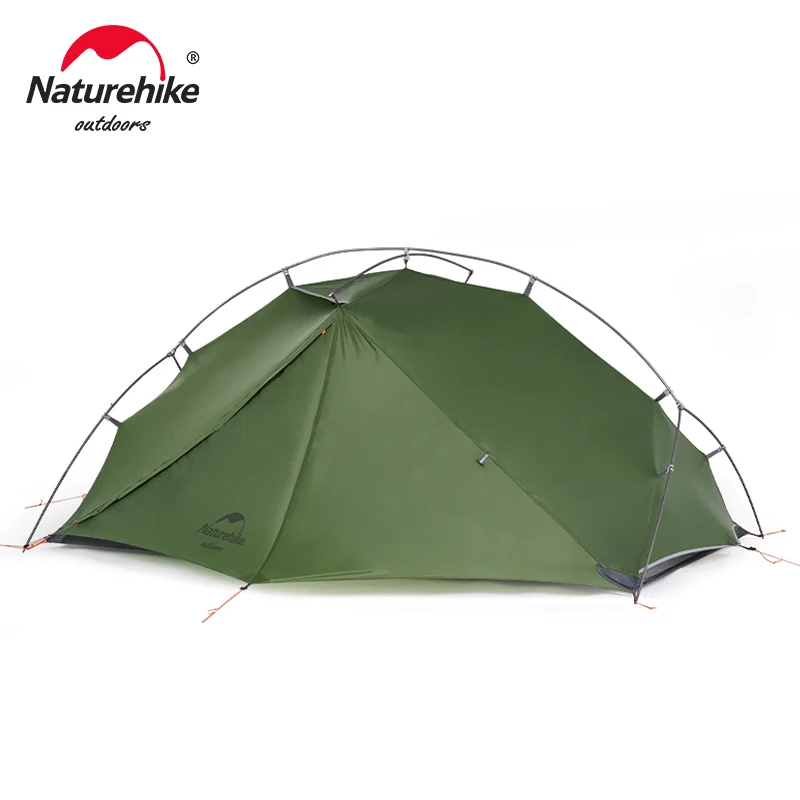
AlpineForge Expedition: Most Durable Ultralight Option for Extended Journeys
Long-distance hikers planning multi-month journeys or multiple thru-hikes with the same equipment should give serious consideration to the AlpineForge Expedition. While accepting a modest weight penalty compared to our ultralight champion, this tent delivers exceptional durability that can withstand thousands of miles of continuous use.
Specifications
- Weight: 34 oz (964g) trail weight, 38 oz (1077g) packed
- Dimensions: 88” × 42/32” (length × head/foot width)
- Peak Height: 42” (107cm)
- Materials: 15D ripstop nylon with reinforced floor (30D), DAC Featherlite poles
- Capacity: 1 person plus ample gear storage
- Packed Size: 16” × 6” (40.6cm × 15.2cm)
Performance Analysis
The Expedition’s durability advantage comes from thoughtfully reinforced stress points and slightly higher denier fabrics in critical areas. The floor utilizes 30D waterproof nylon that resists punctures from rough surfaces, while tie-out points feature additional reinforcement panels that prevent the common tears that plague ultralight tents during high winds.
Despite these durability enhancements, the Expedition maintains a respectable 34-ounce trail weight—still well within ultralight territory. Its semi-freestanding design strikes an excellent balance between stability and ease of setup, requiring just four stakes for a basic pitch and two additional for the vestibule.
Weather performance is outstanding, with a full-coverage rainfly that extends nearly to the ground and a bathtub floor that reliably prevents splashback during heavy storms. For those seeking maximum protection, the waterproof backpacking tent category offers similar options with varying weight-to-durability ratios.
Limitations
The additional materials do result in slightly larger packed size and weight compared to our lightest recommendations. The tent also commands a premium price, though the extended lifespan arguably offers better long-term value than replacing less durable options more frequently.
Lightweight Backpacking Tent, Ultralight Backpacking Tent, Ultralight Bivy Tent
Ultralight Single Person Camping Tent with Aluminum Poles for 3-Season Backpacking Waterproof DesignPrice range: $94.88 through $326.82 Select options This product has multiple variants. The options may be chosen on the product pageLightweight Backpacking Tent, Ultralight Backpacking Tent, Waterproof Backpacking Tent
$391.05 Select options This product has multiple variants. The options may be chosen on the product pageCompact Backpacking Tent, Lightweight Backpacking Tent, Waterproof Camping Tent
$335.52 Select options This product has multiple variants. The options may be chosen on the product pageBackpacking Tent with Vestibule, Freestanding Backpacking Tent, Lightweight Backpacking Tent
Price range: $446.89 through $447.22 Select options This product has multiple variants. The options may be chosen on the product pageBackpacking Tent with Vestibule, Trekking Pole Backpacking Tent, Waterproof Camping Tent
Price range: $271.99 through $519.52 Select options This product has multiple variants. The options may be chosen on the product pageUltralight Backpacking Tent, Ultralight Trekking Pole Tent
Price range: $350.87 through $351.98 Select options This product has multiple variants. The options may be chosen on the product page
Understanding Tent Types for Long-Distance Hiking
Long-distance hikers face unique shelter considerations that weekend backpackers might overlook. Understanding the fundamental tent types helps you make an informed decision based on your specific journey.
Double-Wall vs. Single-Wall Designs
Double-Wall Tents:
* Feature separate inner mesh body and waterproof rainfly
* Better condensation management through air circulation between layers
* Typically heavier (by 4-8 oz/113-227g) than comparable single-wall designs
* Offer versatility to use just the inner tent in dry, bug-heavy conditions
* Generally easier to maintain dry interior during rainy setup/takedown
Single-Wall Tents:
* Combine waterproof protection and living space in one integrated layer
* Lighter overall weight with fewer components
* Faster setup in adverse conditions
* More vulnerable to condensation issues in humid environments
* Often utilize trekking pole tent designs to reduce packed weight
Support Structure Variations
Freestanding:
* Can be set up without stakes on any surface
* Easiest to relocate after pitching
* Typically use dedicated pole structures, adding some weight
* Better for rocky terrain, platforms, or areas with poor soil
Semi-Freestanding:
* Primary structure stands independently
* Requires minimal staking for full setup
* Good balance of convenience and weight savings
Trekking-Pole Supported:
* Use your existing hiking poles for structural support
* Eliminate dedicated pole weight (saving 4-10 oz/113-283g)
* Require more practice for efficient setup
* Need sufficient ground for staking
When choosing between these designs, consider your trail’s likely conditions. Desert sections with rocky ground may favor freestanding designs, while established forested campsites suit trekking pole setups. Many successful long-distance hikers ultimately select hybrid designs that offer reasonable compromise between these various features.
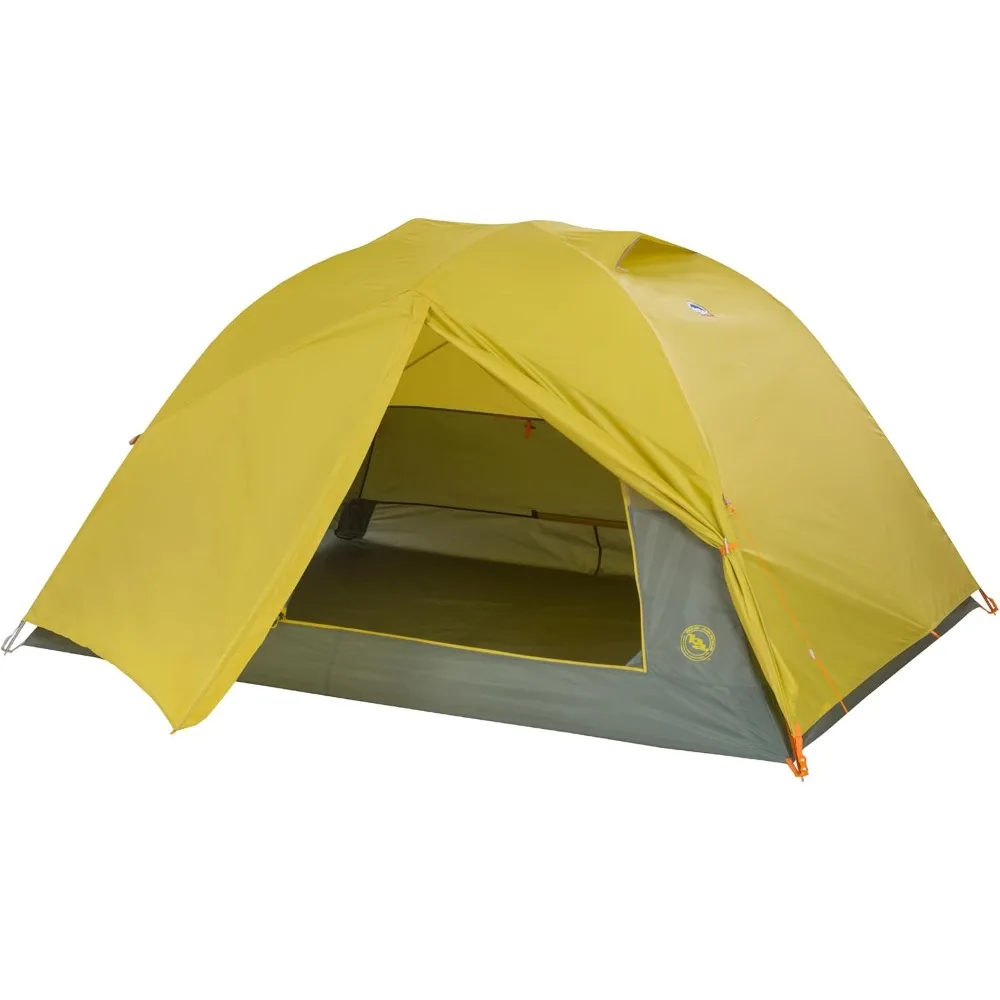
Critical Fabrics and Materials: Making Informed Choices
The materials in your ultralight tent directly impact its performance, weight, and longevity—a critical consideration for long-distance hikes where reliability cannot be compromised.
Primary Tent Materials
Dyneema Composite Fabric (DCF):
* Incredibly lightweight (typically 0.5-0.8 oz/sq yd)
* Completely waterproof without coatings
* Zero water absorption when wet (maintains weight)
* Exceptional strength-to-weight ratio
* Downsides: expensive, limited breathability, poor abrasion resistance
Silnylon (Silicone-Coated Nylon):
* Common in mid-range ultralight tents
* Good balance of weight (typically 1.0-1.5 oz/sq yd)
* Reasonable durability and tear resistance
* Downsides: stretches when wet, requiring readjustment
Silpoly (Silicone-Coated Polyester):
* Minimal stretching when wet
* Good UV resistance for long-term exposure
* Typically weighs 1.1-1.6 oz/sq yd
* Downsides: slightly less tear strength than nylon
Understanding fabric denier (thread thickness) helps assess durability of ultralight hiking tents. Most ultralight tents use 7-15D fabrics for walls and 15-30D for floors. Lower numbers mean lighter weight but require more care. For perspective, a human hair is approximately 20D thick.
Waterproofing Measurements
Hydrostatic head measurements indicate water resistance:
* 1200mm: Minimum for light rain protection
* 1500-2000mm: Adequate for most 3-season conditions
* 3000mm+: Heavy-duty protection for sustained precipitation
For long trails, consider fabrics in the 1500-2500mm range for walls and 2500-3000mm for floors as an optimal balance between weight and protection.
Pole Materials
Aluminum Alloy:
* Standard in most quality tents (usually 7000-series)
* Good strength-to-weight ratio
* Reasonable durability and field-repairable
* More affordable than alternatives
Carbon Fiber:
* 30-40% lighter than comparable aluminum
* Less susceptible to bending under load
* Downsides: more expensive, can shatter rather than bend when stressed beyond limits
For most long-distance hikers, aluminum poles offer the best combination of reliability and value, though serious ultralight enthusiasts may prefer carbon options despite the higher investment.
Weatherproofing: Staying Dry When It Matters Most
On a long-distance trek, weather protection isn’t just about comfort—it’s about sustainability and safety through weeks or months of unpredictable conditions. Even in traditionally “dry” seasons, most major trails expose hikers to significant precipitation.
Critical Weather-Resistant Design Features
- Bathtub Floors: Elevated waterproof perimeters (3-5 inches/7.6-12.7cm) prevent ground water from entering the tent
- Vestibules: Protected storage areas for wet gear separate from sleeping space
- Guy-out Points: Additional attachment points to enhance stability during wind events
- Seam Sealing: Waterproofed stitching areas prevent moisture penetration at the most vulnerable points
- Ventilation Systems: Strategic airflow management to minimize condensation buildup
During our testing on the Pacific Northwest portions of the PCT, we found that proper vestibule design was particularly critical. Double vestibules in one-person 2-person backpacking tents offered superior organization of wet gear and cooking flexibility during multi-day rain events.
Practical Weather Management Tips
- Set up with the tent entrance facing away from prevailing winds
- Use all guy-out points during expected weather events, even if setup takes an extra minute
- Select natural windbreaks when possible (trees, bushes, terrain features)
- During persistent rain, loosen silnylon tent adjustments in the evening and tighten in the morning to account for fabric stretching
- Maintain at least 1-2 inches of ventilation space even during heavy precipitation
Remember that weatherproofing extends beyond the tent itself—site selection dramatically impacts your shelter’s performance in adverse conditions. Low-lying areas collect water, exposed ridgelines face greater wind force, and areas under dead tree limbs pose risks during storms.
Space and Livability: Your Home for Thousands of Miles
When your tent serves as your only personal space for months on end, interior design and livability features become crucial to mental well-being. The psychological impact of comfortable shelter should not be underestimated on long-distance journeys.
Key Interior Measurements
- Floor Area: Typically 18-25 square feet for one-person ultralight tents
- Peak Height: Ranges from 38-45 inches (96.5-114.3cm) in most models
- Floor Length: Minimum 84 inches (213.4cm) for average users; 88+ inches (223.5cm+) for taller hikers
- Shoulder Width: 30-42 inches (76.2-106.7cm) at the widest point
Beyond raw dimensions, the essential features in trekking tents that enhance livability include:
- Practical interior pockets for organizing small items
- Overhead loops for hanging lights
- Sufficient vestibule space for cooking during rain (7-10 sq ft minimum)
- Strategic mesh panels for ventilation without sacrificing weather protection
The ideal tent balances minimal weight with functional space. Though trimming dimensions reduces ounces, experienced long-distance hikers often accept a modest weight increase (2-4 oz/57-113g) for significantly improved livability—a worthwhile trade when you’ll spend 800+ hours inside your shelter during a typical thru-hike.
Setup Efficiency: When You’re Exhausted and It’s Pouring
After a grueling 20+ mile day, the last thing you want is a complicated shelter setup—especially in deteriorating weather conditions. Setup efficiency becomes increasingly important as fatigue accumulates during long-distance hikes.
Setup Considerations for Different Designs
- Freestanding Tents: Typically set up in 2-4 minutes with intuitive pole structures
- Semi-Freestanding: Require 3-5 minutes with minimum staking
- Trekking Pole Tents: Generally take 4-7 minutes and demand more technique
The most efficient compact backpacking tents share several characteristics regardless of their structural design:
- Color-coded components for intuitive assembly
- Pre-attached guylines with tensioners
- Logical sequence that allows quick weather protection before final adjustments
Practical Tips for Efficient Setup
- Practice your tent setup at home until you can complete it with your eyes closed
- Develop a specific gear organization system so stakes and components are always in the same place
- In approaching storms, prioritize getting the rainfly up first, then refine the setup
- When solo hiking, select sites that provide natural anchoring options in case of problematic soil
- Master one-handed techniques for when you’re holding your headlamp in the other hand
Remember that efficiency isn’t just about speed—it’s about reliable results under challenging conditions. The tent that sets up in two minutes in your backyard might prove frustrating on an exposed ridge during a thunderstorm.
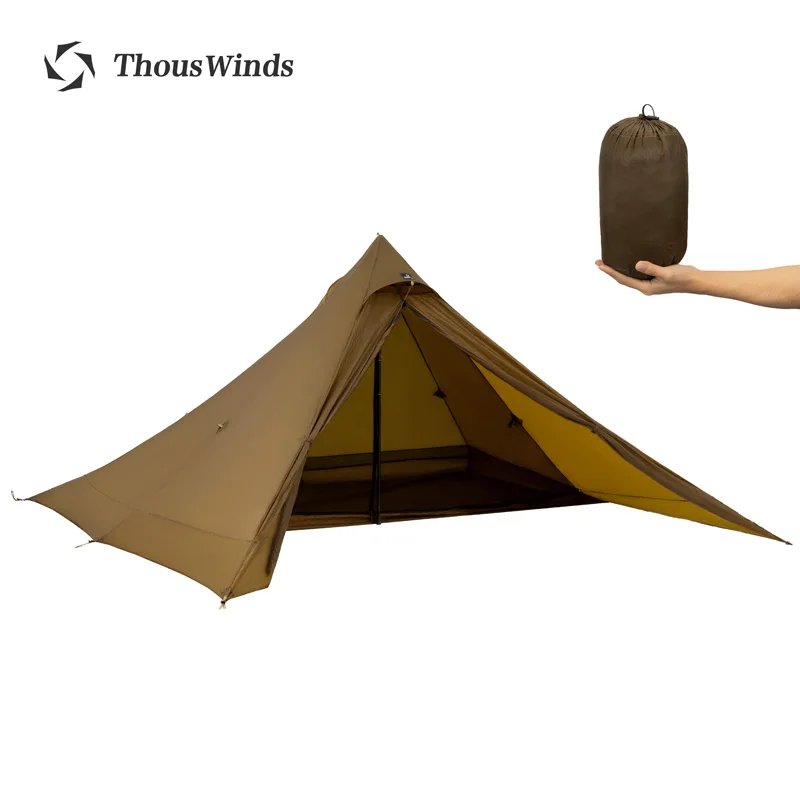
Weight vs. Comfort: Finding Your Perfect Balance
Long-distance hiking demands difficult choices between carrying comfort and carrying weight. While understanding weight considerations for backpacking tents helps inform decisions, the ideal balance varies based on personal priorities and specific trail conditions.
The Weight Impact Reality
Over a 2,000-mile thru-hike, each additional ounce in your pack gets lifted approximately 5 million times. This creates a compelling argument for minimizing weight. However, shelter discomfort can lead to:
- Poor sleep quality affecting hiking performance
- Increased vulnerability during weather events
- Mental fatigue from constant adaptation
- Limited functionality for in-tent activities during rest days or storms
Personal Assessment Framework
Consider these factors when determining your optimal balance:
1. Your physical build and strength
2. Typical weather on your chosen trail during your hiking season
3. Your sleeping style (side, back, stomach)
4. How much time you typically spend in your tent beyond sleeping
5. Your personal tolerance for confined spaces
Weight-Saving Opportunities
If comfort features matter but you’re concerned about weight:
* Consider a slightly larger but lighter fabric (e.g., DCF instead of silnylon)
* Evaluate trekking-pole supported designs to eliminate dedicated pole weight
* Look for multi-function components (vestibule doubles as pack cover)
* Select models with thoughtful interior organization rather than additional space
For most successful long-distance hikers, the sweet spot falls between absolute minimalism and conventional backpacking tents. A well-designed 25-32 ounce (709-907g) shelter offers significant comfort improvements over sub-20 ounce options while remaining light enough for sustainable carrying over thousands of miles.
Essential Accessories for Your Ultralight Shelter System
A complete shelter system extends beyond just the tent itself. Strategic accessory selection enhances protection while maintaining your ultralight approach to selecting an ultralight backpacking tent.
Groundsheet Options
- Dedicated Footprints: Perfectly sized but add 3-6 oz (85-170g)
- Tyvek Sheets: Lightweight (1.5-2.5 oz/43-71g), inexpensive, somewhat bulky
- Polycro (Window Shrink Film): Ultra-lightweight (0.7-1.2 oz/20-34g), fragile but easily replaced
- Silnylon/Silpoly Cuts: Good middle ground for weight, durability, and packability
For long-distance hikes, many experienced trekkers prefer polycro for most conditions, carrying a slightly more durable option for challenging terrain sections.
Stake Selection
- Aluminum Y-stakes: Excellent all-around performance (0.4-0.5 oz/11-14g each)
- Titanium Shepherd’s Hooks: Lightest option but less holding power (0.2-0.3 oz/6-8.5g each)
- Carbon Fiber Stakes: Ultralight yet strong, but expensive (0.2-0.4 oz/6-11g each)
- Aluminum V-stakes: Best for challenging conditions (0.5-0.7 oz/14-20g each)
Most long-distance hikers carry a mixed stake set: 4-6 lightweight options for standard conditions plus 2-4 heavy-duty stakes for challenging situations.
Essential Repair Items
- Tenacious Tape or similar repair tape (small pre-cut pieces)
- Spare guyline cord (5-10 feet/1.5-3m)
- Needle and appropriate thread for fabric repairs
- Small tube of seam sealer
These items typically weigh less than 2 ounces (57g) combined but can save your shelter during extended journeys where replacement isn’t an option.
Is Ultralight Always Right? When to Choose Differently
While the ultralight philosophy dominates long-distance hiking conversations, there are valid scenarios where slightly heavier options provide significant advantages. Understanding comparisons between ultralight and lightweight tents helps inform these nuanced decisions.
When to Consider Heavier Options
Q: Does your trail involve extended periods of harsh weather?
A: Routes with predictably severe conditions (especially wind-driven rain or snow) might justify an extra 5-10 ounces (142-283g) for enhanced protection, stronger materials, and more stability.
Q: Will you be sharing your tent with a partner?
A: Two-person ultralight tents often provide better weight efficiency per person while offering significantly more living space.
Q: Do you have physical limitations that affect setup capabilities?
A: Freestanding designs, though slightly heavier, offer easier setup for hikers with certain physical constraints or injuries.
Q: Will you be camping primarily on wooden platforms or rocky ground?
A: These challenging surfaces favor freestanding designs that don’t rely extensively on staking.
Q: Are you hiking in areas with intense bug pressure?
A: Full double-wall designs with complete mesh inners provide superior insect protection in regions with aggressive mosquitoes, ticks, or other pests.
Finding your personal “right weight” involves honest assessment of your needs rather than blindly pursuing the lightest possible option. Many successful thru-hikers eventually settle on shelters in the 28-35 ounce (794-992g) range after finding that extreme ultralight options (sub-20 ounce/sub-567g) required too many compromises for their personal comfort and safety.
Maintenance on Trail: Extending Tent Life During Long Journeys
Proper maintenance during your long-distance trek significantly extends tent lifespan and performance. Even the best ultralight shelters require attention to prevent premature failure during extended journeys with maintenance considerations for multi-day hikes.
Daily and Weekly Practices
- Brush off dirt and debris before packing whenever possible
- Allow morning condensation to dry before packing when schedule permits
- Periodically check and tighten guylines that may have stretched
- Inspect seam sealing after periods of heavy rain
- Clean and dry tent stakes before storing to prevent fabric damage
Common Failure Points and Prevention
- Pole Stress Points: Ensure even tension during setup to prevent excess stress
- Door Zippers: Keep clean of dirt and operate slowly to prevent teeth separation
- Guyline Attachments: Check for fraying or stretching, especially after high wind events
- Floor Punctures: Be diligent about removing sharp objects from tent site
Field Repair Techniques
- For small tears in fabric, apply repair tape to both sides when possible
- Splint broken poles with tent stakes and repair tape as temporary solution
- Use dental floss as heavy-duty thread for emergency seam repairs
- Create tie-out reinforcements with repair tape folded over multiple times
Remember that in multi-month hikes, taking an occasional zero day to thoroughly dry and maintain your shelter can prevent catastrophic failures in remote sections where replacement is impossible.
Top Questions from Long-Distance Hikers About Ultralight Tents
Based on hundreds of conversations with thru-hikers across major trails, these are the most common questions about ultralight shelters and their practical answers.
Q: What’s the absolute minimum tent weight I should consider for a full thru-hike?
A: While some hikers successfully use shelters as light as 12-14 ounces (340-397g), most find 18-25 ounces (510-709g) provides the best balance of weight savings and functionality for benefits specific to long-distance hiking.
Q: How much interior space do I really need for comfortable long-term use?
A: For most hikers under 6’ tall, a floor area of 18-22 square feet with a peak height of 40-42 inches (102-107cm) provides sufficient space. Taller hikers should look for models with at least 86-90 inches (218-229cm) of floor length.
Q: Do ultralight tents actually hold up for entire thru-hikes?
A: Quality ultralight tents from reputable manufacturers typically withstand complete thru-hikes with proper care. The key factors affecting longevity are material quality, user maintenance, and setup technique rather than just weight.
Q: Is it worth sharing a tent with a partner to save weight?
A: Two-person tents typically weigh 25-40% less per person than comparable one-person models. For compatible hiking partners, this represents one of the most significant potential weight savings in your entire kit.
Q: How do I manage condensation in ultralight single-wall tents?
A: Strategic site selection away from water sources, maintaining 1-2 inches of ventilation space at rainfly edges, and wiping down interior walls with a small pack towel in the morning all help minimize condensation issues.
How Your Tent Fits Into Your Overall Ultralight Strategy
Your shelter choice influences—and is influenced by—virtually every other aspect of your ultralight hiking approach. Understanding weight considerations in overall hiking strategy helps create a cohesive and efficient system.
Shelter Impact on Hiking Style
Your tent selection affects:
* Daily mileage potential based on carried weight
* Campsite selection criteria and flexibility
* Weather tolerance and hiking windows
* Need for in-town recovery time
Ultralight shelters generally enable more flexible hiking schedules and greater daily mileage, but may require more careful campsite selection and weather awareness.
Complementary Gear Considerations
For maximum effectiveness, align your shelter choice with:
* Sleeping pad insulation and durability requirements
* Pack volume needs for compressed shelter size
* Sleeping bag/quilt temperature ratings and moisture resistance
* Weather protection from clothing systems
When viewed holistically, your shelter represents approximately 15-25% of your total base weight but significantly impacts overall comfort and safety during long-distance journeys.
Final Perspective
The perfect ultralight trekking tent doesn’t exist in absolute terms—only the perfect tent for your unique needs, preferences, and trail conditions. By understanding the critical features, material properties, and design considerations outlined in this guide, you’re well-equipped to make an informed decision that will serve you faithfully for thousands of miles.
Remember that on a long-distance hike, your tent becomes more than gear—it transforms into your home, sanctuary, and constant companion. Choose wisely, maintain diligently, and enjoy the remarkable freedom that comes with carrying precisely what you need and nothing more.

